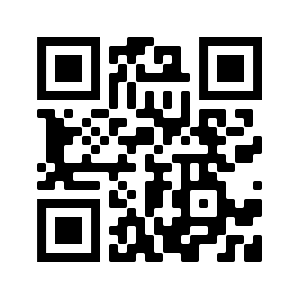Antibacterial Activity and Tlc-Biotography Profile of the Ethyl Acetat Fraction of Asian Pigeonwings Flower (Clitoria ternatea) against Escherichia coli
Abstract
Infectious diseases are diseases caused by the presence of microorganisms that enter and develop in the body, causing several clinical symptoms and signs. One of the infectious diseases is diarrhea caused by Escherichia coli. There are many potential herbal plants as alternative antibacterial antibiotics, one of which comes from the Asian pigeonwings flower (Clitoria ternatea). This study aims to determine the antibacterial activity of the ethyl acetate fraction of pigeonwings flower, phytochemical compounds and its TLC-bioautography profile. The antibacterial compound of pigeonwings flower was extracted by maceration using ethanol and then fractionated by ethyl acetate and made solutions with concentrations of 5, 10, 20, and 40%, respectively. The experiment was carried out with 3 replications using the well diffusion method and followed by TLC-bioautography to determine the TLC-bioautography profile. Phytochemical compounds of pigeonwings flower were determined by thin layer chromatography (TLC). Antibacterial activity data were analyzed using the One Way ANOVA and continued with the Tukey HSD 5% through SPSS. The ethyl acetate fraction of pigeonwings flower had the best antibacterial activity at a concentration of 40% with an inhibition zone diameter of 11.54 mm. The diameter of the inhibition zone showed significantly different in each concentration and it can be said that the ethyl acetate fraction of pigeonwings flower was able to inhibit the growth of E. coli. The phytochemical compounds contained in the ethyl acetate fraction of pigeonwings flower are flavonoids and alkaloids with flavonoids being the most active compounds in inhibiting the growth of E. coli.
Full Text:
PDFReferences
- Purwanto, S. 2015. Uji Aktivitas Antibakteri Fraksi Aktif Ekstrak Daun Senggani (Melastoma malabathricum L) Terhadap Escherichia coli. Jurnal Keperawatan Sriwijaya. 2(2): 84-92.
- Sumampouw, O.J. 2018. Uji Sensitivitas Antibiotik Terhadap Bakteri Escherichia coli Penyebab Diare Balita di Kota Manado. Journal of Pharmaceutical Sciences. 2(1): 104-110.
- Riyanto,E.F., A.N. Nurjanah, S. N. Ismi, dan R. Suhartini. 2019. Daya Hambat Ekstrak Etanol Bunga Telang (Clitoria ternatea L.) Terhadap Bakteri Perusak Pangan. Jurnal Kesehatan Bakti Tunas Husada. 19(2): 218-225.
- Aslah, A. P., W. A. Lolo, dan I. Jayanto. 2019. Aktivitas Antibakteri dan Analisis KLT-Bioautografi dari Fraksi Daun Mengkudu (Morinda citrifolia L.). PHARMACON. 8(2): 505-515.
- Can-ake, R., Gilda. E. R., Filogonio, M. P., and Luis, M. P. 2004. Bioactive terpenoids from roots and leaves of Jatropha gaumeri. Rev Soc Quim Mex. 48.
- Yuliani, N. N., J. Sambara, M. A. Mau. 2016. Uji Aktivitas Antioksidan Fraksi Etil Asetat Ekstrak Etanol Rimpang Jahe Merah (Zingiber officinale var. Rubrum) dengan Metode DPPH (1,1-Diphenyl-2-Picrylhydrazyl). Jurnal Info Kesehatan. 14(1): 1092-1111.
- Adriani,W. 2020. Aktivitas Antibakteri Fraksi Etil Asetat Bunga Telang (Clitoria ternatea) Terhadap Bakteri Staphylococcus aureus dan Analisis KLT Bioautografi. Skripsi. Magelang: Universitas Muhammadiyah Magelang. http://eprintslib.ummgl.ac.id/2469/
- Akhita, D. P. 2019. Efek Antibakteri Ekstrak Etanol Biji Edamame (Glycine max (L.) Merril) terhadap Bakteri E. coli. Skripsi. Jember: Universitas Jember. https://repository.unej.ac.id/handle/123456789/92452
- Dewi, N.L.A., L. P. S. Adnyani, R. B. R. Pratama, N. N. D. Yanti, J. I. Manibuy, dan N.K. Warditiani. 2018. Pemisahan, Isolasi, dan Identifikasi Senyawa Saponin dari Herba Pegagan (Centella asiatica L. Urban). Jurnal Farmasi Udayana. 7(2): 68-76.
- Fadlila, W. N., K. M. Yuliawati, dan L. Syafnir. 2015. Identifikasi Senyawa Aktif Antibakteri dengan Metode Bioautografi KLT terhadap Ekstrak Etanol Tangkai Daun Talas (Colocasia esculenta (L.) Schott). Prosiding Penelitian SPeSIA: 583-590.
- Syarifuddin, A. dan N. Sulistyani. 2018. Aktivitas Antibiotik Isolat Bakteri Kp1 dan Analisa Kebocoran Sel Bakteri Escherichia coli (Activity of Antibiotic Bacterial Isolate Kp13 and Cell Leakage Analysis of Escherichia coli Bacteria). Jurnal Ilmu Kefarmasian Indonesia. 16(2): 137–144.
- Syarifuddin, A., N. Sulistyani, dan Kintoko. 2019. Profil KLT-Bioautografi dan Densitometri Fraksi Teraktif (IsolatKp13) dari Bakteri Rizosfer Kayu Putih (Melaleucaleucadendron L.). Jurnal Farmasi Sains dan Praktis. 5(1): 27-33.
- Kurama, G.M., W. Maarisit, E.Z. Karundeng, dan N.O. Potalangi. 2020. Uji Aktivitas Antibakteri Ekstrak Etanol Daun Benalu Langsat (Dendropthoe sp.) Terhadap Bakteri Klebsiella Pneumoniae. Jurnal Biofarmasetikal Tropis. 3(2): 27-33.
- Katuuk, R.H.H., S.A. Wanget, dan P. Tumewu. 2019. Pengaruh Perbedaan Ketinggian Tempat terhadap Kandungan Metabolit Sekunder pada Gulma Babadotan (Ageratum conzyoides L.). COCOS
- Jaafar, N. F., M. E. Ramli, and R. M. Salleh. 2020. Optimum Extraction Condition of Clitoria ternatea Flower on Antioxidant Activities, Total Phenolic, Total Flavonoid, and Total Anthocyanin Contents. Tropical Life Sciences Research. 31(2): 1-17.
- Rika, P. R. 2014. Uji Aktivitas Antibakteri Ekstrak Etanol Daun Mangga Bacang (Mangifera foetida L.) terhadap Staphylococcus aureus secara In Vitro. Naskah Publikasi. Pontianak : UniversitasTanjungpura.https://media.neliti.com/media/publications/194452-ID-none.pdf.
DOI: https://doi.org/10.20961/jbb.v2i2.66769
Refbacks
- There are currently no refbacks.

This work is licensed under a Creative Commons Attribution-NonCommercial 4.0 International License.
|






1.png)



3.png)
